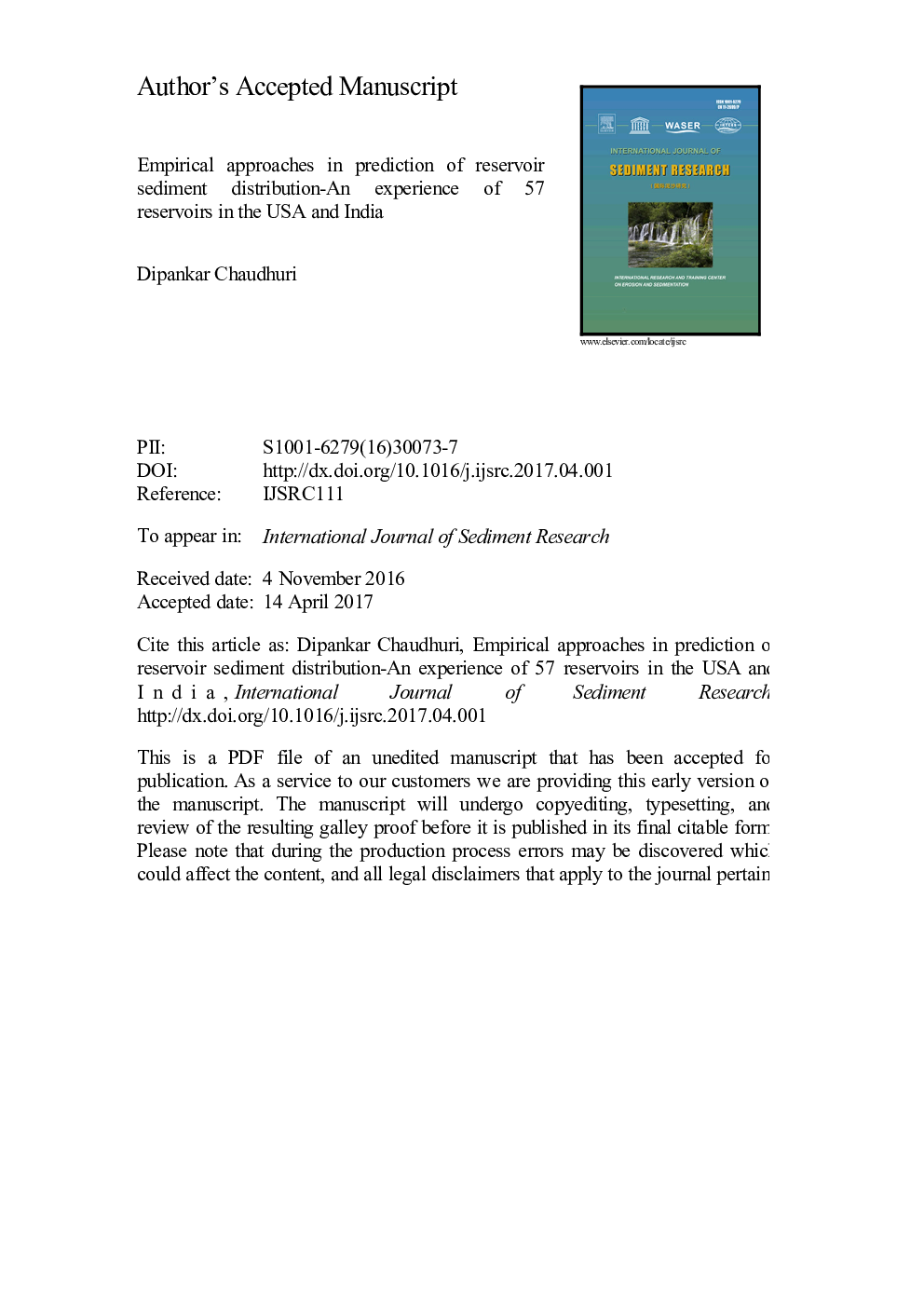| Article ID | Journal | Published Year | Pages | File Type |
|---|---|---|---|---|
| 8911188 | International Journal of Sediment Research | 2017 | 55 Pages |
Abstract
An accurate prediction of sediment distribution may minimize economic losses through proper and timely planning of the functional activities of a reservoir. This study assesses different temporal and spatial factors that affect for sediment deposition in a reservoir and its distribution. This study also focuses on evaluation of two popular distribution prediction methodologies, Area Increment and Empirical Area Reduction, based on experience with sediment distribution in 57 reservoirs in the USA and India. A non-iterative processed empirical distribution model (NPEDM) and a linear regression trend model (LRTM) are proposed to predict sediment distribution. Silt contributing area and inflow entering a reservoir are found to be the most significant factors affecting in reservoir sediment deposition. Compared to the Empirical Area Reduction method, the Area Increment method provided better prediction. The reservoir classification approach and empirical design distribution type curves given by Borland and Miller (1960) are found to be rational. Shape factor values for different periods indicate that reservoir shape (type) changes with time. Thus, long term prediction is not desirable in Type-II & III reservoirs using the Empirical Area Reduction method. Newly developed the NPEDM shows reasonably good prediction of sediment distribution. The NPEDM is very easy to apply and can be used in any reservoir of any size. Extrapolation of the trend of sediment distribution obtained from the LRTM indicates an accurate short term prediction in a few reservoirs as causes of temporal and spatial variations of sediment distribution including the factors of uncertainties of sediment deposition are implicit within the methodology.
Related Topics
Physical Sciences and Engineering
Earth and Planetary Sciences
Geochemistry and Petrology
Authors
Dipankar Chaudhuri,
